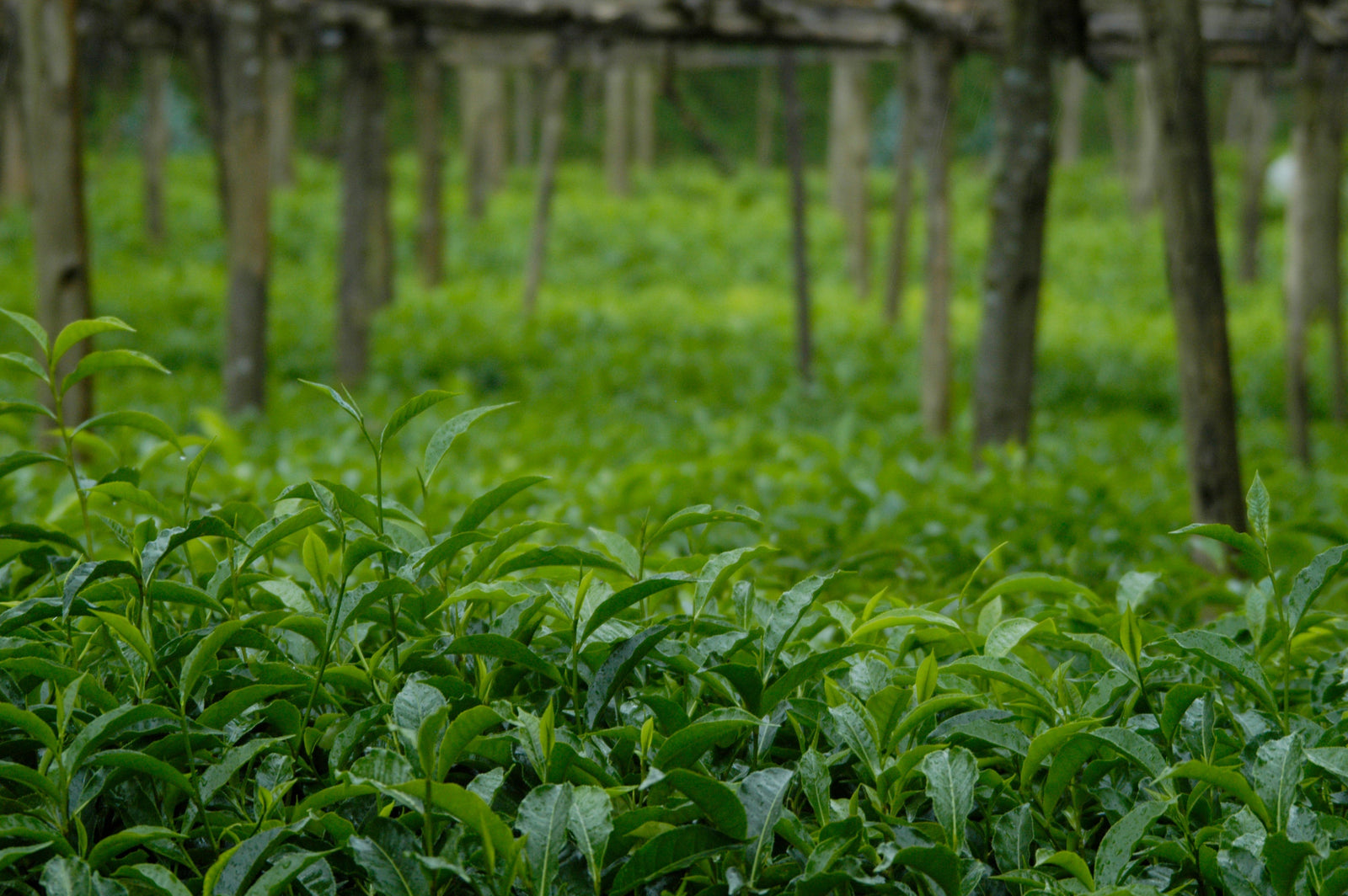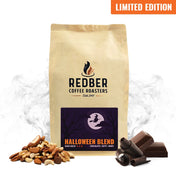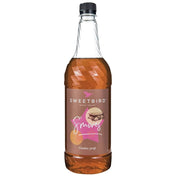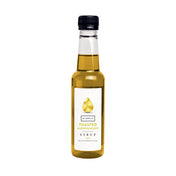What is Black Tea?
Black tea is a highly aged variety of tea and is the most oxidised out of all the other teas like green tea, white tea, and oolong teas. Because of this intense oxidation, the flavour profile of black tea is much stronger than other tea varieties.
Black tea is known for it's strong flavours. Its liquor is characterised as having a dark amber colour, robust and full-bodied texture, smoky aroma with a distinct malty flavour, and an astringent aftertaste. To cut such brisk flavours, black tea is typically consumed with an additive like milk or plant based milks to mellow the taste. It can be sweetened with honey or sugar, and for those who don’t like milk, lemon is a great option.
Black Tea Origins
Tea is considered to have originated in China. But it’s the delicate, fresh-tasting green tea that became popular in Eastern society and is still the base of tea culture there today. As tea culture spread and tea was processed for export to trade beyond regions, neighbouring countries and eventually across oceans, it was discovered that the more oxidised black tea would retain its freshness and flavour better over long journeys than its minimally oxidised green tea cousin. In the earliest days of border trade between China, Tibet and other neighbouring countries, tea was fermented, dried, and pressed into bricks to be used as currency. To this day, most of the black tea produced in China is exported out of the country.
The Dutch first brought tea to Europe in 1610, it arrived in England in 1658, and then it rose in popularity in England’s American colonies throughout the 1700s. Demand for tea experienced huge leaps in the 1700s as England expanded sugar imports from its Caribbean colonies. By 1800, the English were annually consuming 2½ pounds of tea and 17 pounds of sugar per capita. Some claim it was the increasing trend of adding sugar to tea that spiked the demand for strong black tea over the more delicate green tea imports.
The next leap in black tea production came in the 1800s when the Camellia sinensis assamica tea plant variety was discovered in 1823 in the Assam region of India. This native variety was much better suited to the production of the hearty, bold black teas that were in high demand. Not long after, in 1835, the English started planting tea gardens in India’s Darjeeling region, near Nepal. Since India was a British colony, these different varieties of black teas quickly became popular exports to England.
Black Tea Processing
It’s important to know that all tea originates from the same exact plant—Camellia sinensis. It’s the variety of tea plant and how the plant’s leaves are processed that define if a tea becomes black or green.
Black Tea
Camellia sinensis assamica is a larger-leafed varietal of the tea plant that is typically used to produce black tea. Originating in the Assam district of India, it grows in warm, moist climates and is prolific in sub-tropical forests.
Camellia sinensis sinensis is a smaller-leafed variety native to China that is typically used to make green and white teas. It evolved as a shrub growing in sunny regions with drier, cooler climates. It thrives in mountainous regions because it has a high tolerance for cold.
Hundreds of cultivars and hybrid plants have evolved from these Camellia sinensis plant varieties over time. But technically any type of tea—white, green, yellow, oolong, black or pu-erh—can be made from the leaves of any Camellia sinensis plant.
Black Tea Oxidation
What makes black tea different from green tea is that during the production process, the tea leaves are allowed to fully oxidise before they are heat-processed and dried. During oxidation, oxygen interacts with the tea plant’s cell walls to turn the leaves the rich dark brown to black colour that black tea leaves are famous for. Oxidation alters the flavour profile of a black tea as well, helping add malty, fruity or even smoky notes, depending on the tea.
By contrast, when green tea leaves are processed, they are minimally oxidised. After being harvested, they are quickly heated and dried to prevent too much oxidation from occurring that would turn the green leaves brown and alter their fresh-picked flavour. Less oxidation means a green tea is typically lighter in colour and flavour than black tea, with more vegetal, grassy or seaweed notes, depending on the tea.
Black Tea Processing:
Black teas are typically produced using one of two methods:
- Orthodox: In this more time-consuming method of production, tea leaves remain whole or only partially broken during processing. Tea leaves are plucked from the garden, withered to reduce moisture, rolled in a variety of ways to bruise the leaves and start oxidation, oxidised to create colour and flavour, fired to apply the heat that stops oxidation, and then graded for quality.
- Non-Orthodox or CTC (Crush-Tear-Curl): In this sped-up version of the production process, the tea leaves are cut into fine pieces instead of rolled. The smaller pieces of leaves are more quickly oxidised, producing a one-dimensional, consistent, strong and bold black tea. The cut pieces also easily fit into commercial tea bags, which are more popular with end consumers than loose leaf tea.
Black Tea Processing (Orthodox):
Withering → 1st Rolling → Oxidising/Fermenting → Drying (110°C/65°C)
Black Tea Processing (Non-Orthodox/CTC):
Withering → Cutting/Tearing/Curling → Oxidising/Fermenting → Drying (130°C/90°C)
Types Of Black Tea
Black tea is grown and processed all over the world in varying geographies and climates. Three of the largest producers of black tea today are India, Sri Lanka and Africa. In fact, half of the world’s tea production comes from India. Some of the most popular styles of black tea coming out of these top-producing countries include:
ASSAM:
India’s Assam region is the largest tea-growing region in the world. The rainy, tropical climate produces a tea known for its bold and malty characteristics that stand up well to milk and sugar.
DARJEELING:
Grown in a smaller, mountainous tea-producing region of India, Darjeeling is a softer, more herbaceous black tea that can change season to season with the climate. Darjeeling is often used as the tea base for India’s popular spiced beverage, Chai.
CEYLON:
Much of Sri Lanka’s economy depends on its more than half a million acres of tea gardens that range in location from cool and mountainous to humid and tropical. Most of Sri Lanka’s tea export is black tea, known as Ceylon. Ceylon teas can vary depending on where they grow, but they are generally known to be strong and brisk with a hint of spice. (Sri Lanka is also known for its cinnamon production.)
KENYAN:
Being a latecomer to tea production (early 1900s), Kenya learned fast and now leads Africa and the industry in the CTC style of tea production, producing and exporting mostly black tea. Kenyan tea is known for its assertive, full-bodied style.
Black Tea Tasting Notes:
For a long time, the quality and variety of black tea wasn’t something that was highly regarded in the West, mass production needed to meet the demand for tea was more important. As consumers discover more about the world of tea, the demand for artisan, loose leaf teas are on the rise. The demand for tea variety, freshness and flavour have also become more important factors in choosing which black tea consumers choose to sip.
When choosing black tea, it’s important to remember that black teas have their own particular and unique flavour profiles, including where the tea was grown, if the black tea grew near other crops that affected its flavour (e.g. rose bushes or coffee plants), what kind of climate the tea grew in, if it was fertilised naturally or with chemicals, how long the leaves were allowed to oxidise when processed, what kind of heat treatment the leaves received to stop oxidisation, and whether the leaves were left whole (orthodox) or cut into smaller pieces (non-orthodox) for packaging.
As a general rule in the world of tea; black tea is stronger, bolder, and richer than green tea. A brewed black tea can range in colour from amber to red to dark brown, and its flavour profile can range from savoury to sweet, depending on how long it was oxidised and how it was it was heat processed. Black tea typically has more astringency and bitterness than green tea, but if brewed correctly it should be smooth and flavourful.
Some common traits used to describe the overall flavour profile of the black tea category include malty, smoky, brisk, earthy, spiced, nutty, metallic, citrus, caramel, leather, fruity, sweet and honey.
Caffeine Content in Black Tea
Between coffee, black tea and green tea, coffee generally has the most caffeine content per cup, then black tea, followed by green tea. But, like any beverage brewed from a caffeinated plant, there are a lot of factors that can determine caffeine levels in your cup of black tea, including how the plant was processed and how the beverage was brewed. Some generally accepted guidelines for caffeine content are:
8 oz. Beverage |
Avg. Caffeine Content |
Green Tea |
24 to 40 mg |
Black Tea |
14 to 61 mg |
Brewed Coffee |
95 to 200 mg |
Buying And Storing Black Tea
To ensure you’re getting the freshest black tea you can sip, be sure and buy it from a reputable company such as ourselves here at Redber.co.uk
While it won’t really go “bad”, tea can get stale if it sits around too long. Oxidised black tea is more shelf stable than its delicate green tea cousin. Many black teas can last up to one to two years if stored properly in a cool, dark place and in an opaque, airtight container away from light, moisture and pantry items like coffee and spices that can leach flavour into the tea leaves.
Preparing Black Tea
To brew the perfect cup of black tea, check out our Redber brew tips below, but always check for brewing instructions specific to the tea you purchased, because many black teas have different ideal brewing temperatures and steeping times. Here are a few general black tea brewing tips to keep in mind:
- Use fresh, pure, cold filtered water.
- Black teas are typically brewed for longer periods of time and in hotter temperatures than green teas. Generally, this is somewhere between 90 and 100 degrees Celsius for 3 to 5 minutes.
- If your black tea came with specific recommendations for brewing, use those. But using about 2 grams of loose-leaf tea per 8 oz. cup of water is a safe bet.
- Cover your tea while it steeps to keep all the heat in the steeping vessel.
- Don’t over steep your tea! The longer your tea steeps, the more quickly it will release any bitterness and astringency. Taste your tea after the recommended steeping time and then decide if you’d like it to steep a little longer.
- Most high-quality loose leaf black teas can be steeped multiple times.
- Most black teas are strong enough to stand up to milk and sugar. But to truly enjoy the subtle flavour differences between the many varieties of black tea, try sipping them plain with no additives.
Love Tea? Check out our range of Teas and our delicious chocolates and biscuits!
Sources:
TeaClass by Adagio – Camellia Sinensis
The Story of Tea: A Cultural History and Drinking Guide by Mary Louw Heiss and Robert J. Heiss, 2007
New Tea Lover’s Treasury by James Norwood Pratt, 1999
Specialty Tea Institute, Teatulia.com, Teabox101.com




